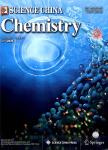Theoretical study of the interaction mechanism of single-electron halogen bond complexes H_3C…Br-Y(Y=H,CN,NC,CCH,C_2H_3)
Theoretical study of the interaction mechanism of single-electron halogen bond complexes H_3C…Br-Y(Y=H,CN,NC,CCH,C_2H_3)作者机构:College of Life Science and Chemistry Tianshui Normal University Tianshui China Lanzhou Institute of Chemical Physics Chinese Academy of Sciences Lanzhou China
出 版 物:《Science China Chemistry》 (中国科学(化学英文版))
年 卷 期:2010年第53卷第1期
页 面:216-225页
核心收录:
学科分类:081704[工学-应用化学] 07[理学] 070304[理学-物理化学(含∶化学物理)] 08[工学] 0817[工学-化学工程与技术] 0703[理学-化学]
基 金:supported by the Foundation of the Education Committee of Gansu Province (Grant No. 0708-11) "Qinglan" Talent Engineering Funds of Tianshui Normal University
主 题:single-electron halogen bond single-electron hydrogen bond single-electron lithium bond MP2 DFT NBO AIM
摘 要:The characteristics and structures of single-electron halogen bond complexes H3C…Br-Y(Y = H,CCH,CN,NC,C2H3) have been investigated by theoretical calculation *** geometries were optimized and frequencies calculated at the B3LYP/6-311++G *** interaction energies were corrected for basis set superposition error(BSSE) and the wavefunctions obtained by the natural bond orbital(NBO) and atom in molecule(AIM) analyses at the MP2/6-311++G *** each H3C…Br-Y complex,a single-electron Br bond is formed between the unpaired electron of the CH3(electron donor) radical and the Br atom of Br-Y(electron acceptor);this kind of single-electron bromine bond also possesses the character of athree-electron bond.Due to the formation of the single-electron Br bond,the C-H bonds of the CH3 radical bend away from the Br-Y moiety and the Br-Y bond elongates,giving red-shifted single-electron Br bond *** effects of substituents,hybridization of the carbon atom,and solvent on the properties of the complexes have been *** strengths of single-electron hydrogen bonds,single-electron halogen bonds and single-electron lithium bonds have been *** addition,the single-electron halogen bond system is discussed in the light of the first three criteria for hydrogen bonding proposed by Popelier.



